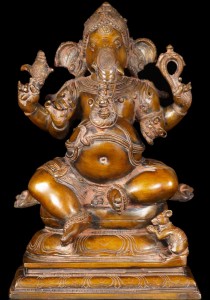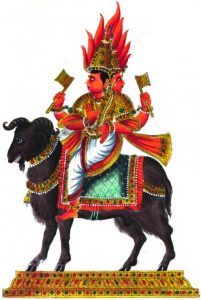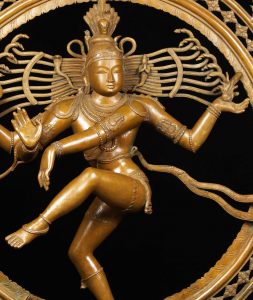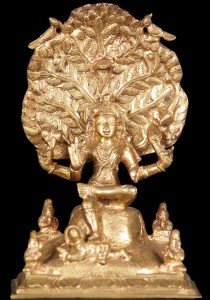
Lotus Sculpture has received a new shipment from North India of brass statues of Hindu Gods. The brass statues are a completely new addition to Lotus Sculpture’s offerings. The Hindu brass statues are made in Delhi, India. Brass sculptures are less expensive than the bronze statues we carry making it possible for everyone to bring home a Hindu statue from Lotus Sculpture without spending hundreds of dollars.
Brass Hindu statues are typically much less expensive than bronze. This makes them very attractive to households looking for a Hindu deity for their home altar for daily puja. Brass statues take less time to make than their bronze counterparts as each design is copied from one master mold. It is possible to find multiple copies of each brass statue. Each statue Lotus Sculpture carries is hand selected by the founder of Lotus Sculpture, Kyle Tortora who regularly visits Asia to choose the statues for the store.
“I take great pride in personally selecting each statue Lotus Sculpture carries and am happy to now offer high quality, brass statues of Hindu gods further making Lotus Sculpture the destination to find the highest quality Hindu sculpture in the world.”
says Tortora
Over the years, the quality of brass statues has risen significantly. It is now possible to find quality brass statues in India which is the reason Lotus Sculpture is now carrying them. The quality will never reach the level of detail and power inherent in lost wax method bronze statues, however, the quality and price of the statues makes them the perfect statues for homes that want a quality Hindu god but cannot quite afford the highest quality bronze statues.

Previously, Lotus Sculpture has exclusively carried one of a kind, lost wax method bronze statues. Bronzes are made in Tamil Nadu in the South of India. Bronze statues are one of a kind statues made by hand. The bronze making art has been passed on from generation to generation unchanged since the Chola dynasty in South India 1100AD. Lost wax bronze statues are used in Hindu temples throughout India and the world. Bronze statues are prized for their fine detail and their connection to the past. Bronze antiques are prized by collectors and are seen in museums around the world. The high quality bronzes take months and sometimes years to produce. Lost wax bronze statues are made from a combination of 5 metals with high amounts of copper which produces a high quality metal alloy; bronze. Only one statue is made at a time. Each step of the lengthy and complicated lost wax process is performed in rural villages using the same techniques passed down for centuries. Lotus Sculpture is pleased to play their part in keeping the lost wax tradition alive in India.
Lotus Sculpture’s addition of Hindu brass statues to our collection of lost wax bronze statues will further reinforce that there is only one place to find the highest quality Hindu sculpture in the world; Lotus Sculpture!





